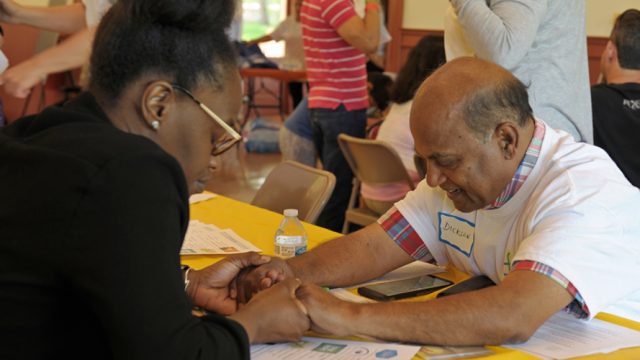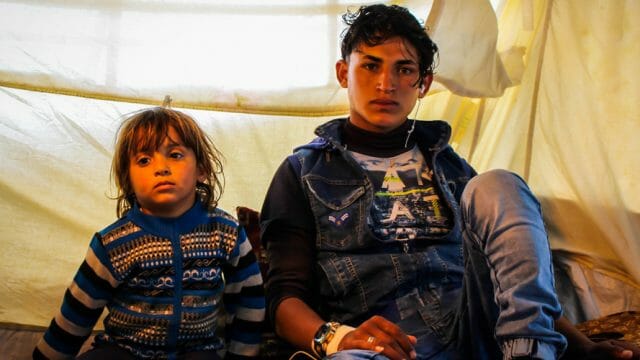Helping children grow resilient

Have you noticed how some people undergoing great trauma or difficulties can get up again while others remain defeated and broken after similar experiences? The difference between these people is their resilience. Some of the best examples of resilient people in the Bible are Joseph, Job, Ruth, and Paul.
Resilience is the ability to bend and not break when under pressure. Although this concept originally comes from the study of engineering, what it means for human beings is the capacity to deal with, overcome, learn from, transform, or even flourish, when faced with the inevitable adversities of life.¹
These difficulties do not need to be circumstances of catastrophic proportions, such as a global pandemic. For children, adversity can look like not having anyone to play with during recess, or the loss of a pet, etc. What is experienced as a difficulty by one may not be a challenge for another.
WE LEARN TO BEND
Resilience is not a static trait that one is born with. Although personality and temperament play a part in becoming resilient, it is a dynamic process. But it can be learned, improved, even developed. Think of Moses and Jacob. Neither of them was very good in coping with problems in their youth, and yet, God helped them learn to rise above great adversity through their life experiences.
Resilience is not one single attribute, but a constellation of personal resources and strengths that promote well-being, protect us in adverse or risky situations, and help develop a healthy problem-coping style. This concept emerged from the branch of positive psychology that focuses on strengthening positive resources and processes to enter a virtuous cycle of healthy development. Thus, resilience can be developed by making these underlying personal resources stronger and by making good use of them.
As parents, teachers, and role models in our churches and communities, there is plenty we can do to improve our children’s ability to bend and bounce back. Most experts in this field indicate that the influence of significant adults (either within or outside the family) is the most important factor in determining how resilient a child will be. It is closely related to the experience of respect and good relations within the family or with other significant adults. Knowingly or inadvertently, adults model resilience to children, either by teaching them or by example.
One does not need to have a complete package of strengths to be resilient, but there are ways we can grow in several areas. Try to invest your efforts in strengthening or developing some of the factors in each of the following:
1. START WITH YOURSELF
When experiencing oxygen loss while flying, adults are instructed to put on their oxygen masks before their kids. The same is true of resilience. It is important to work first on your own abilities in order to help your child. What resilient characteristics can you count within yourself and which of them need work? Even better, try identifying which ones you can learn along with your child, which may serve to strengthen your relationship. Some characteristics of ideal resilient mentors are flexibility, the ability to cope with and resolve problems, good communication skills, having a good support network, and, of course, having a healthy and close relationship with the child.
2. SOCIAL RELATIONSHIPS AND CONNECTIONS²
Spend quality time with your child by connecting, showing affection, talking, teaching them about emotions, and doing activities that facilitate their development.
Support your child in building relationships with other significant adults. Without intruding, monitor those relationships with other adults to ensure the safety and well-being of your child.
Help your child develop social skills and friendships with peers by encouraging socialization and play (even if it is virtual), teaching the child to support others and to be forgiving.
You can help your child develop empathy by role-modeling positive relationships, talking about other people’s feelings, validating and feeling with the child’s emotions, and letting them take on other people’s tasks.
3. AUTONOMY AND INDEPENDENCE
It is important not to shield our children from life’s challenges. Instead, teach your child about problem-solving, reinforce independence, and role-model responsibility. Provide opportunities for free play (it allows children to make mistakes in a safe environment while developing problem-solving skills), encourage the child to make their own decisions, teach them self-care, and let your child come up with new ideas while encouraging creativity.
4. HANDLING EMOTIONS
Being resilient is about managing emotions healthfully and positively. You can promote this behavior by using open-ended questions or encouraging the child to talk about their feelings. It is good to promote the experience of positive emotions (see Prov. 17:22) and acknowledge and validate feelings of distress. This is one practical way of teaching children how to regulate emotions, and helping them accept that difficulties are part of life.
5. OPPORTUNITIES FOR PERSONAL CHALLENGE
Don’t be afraid to let children experience failure, for they must learn to accept changes and challenges while experiencing small doses of “everyday adversity.” Teach your child to plan and prepare for all events (especially those that provoke anxiety). Allow the child to deal with difficult situations while guiding them as necessary.
Resilient characteristics can be organized in many ways.³
The child has…(External Supports)
- One or more persons in the family they can trust and who love the child unconditionally.
- One or more persons outside the family they can trust without reservation.
- Limits to the child’s behavior.
- People who encourage the child’s independence.
- Good role models.
- Access to basic services (health, education, social, security).
- A stable family and community.
The child is…(Internal Strengths)
- A person most people like.
- Generally calm and good-natured.
- Respectful of self and others.
- Responsible for own behavior and accepting of consequences.
- Confident, optimistic, hopeful person.
- Faithful and has a spiritual relationship with God.
The child can…(Interpersonal/ Problem-solving Skills)
- Generate new ideas and ways to do things.
- Finish what they start.
- Find humor in life.
- Communicate thoughts and feelings.
- Solve problems in different settings.
- Manage their behavior and emotions.
- Reach out for help when needed.
¹ E. H. Grotberg, Resilience for Today: Gaining Strength From Adversity (Greenwood, S.C.: Praeger Publishers, 2003).
² For specific examples about each of these tips at each age stage, follow links to each area of resilience and age group in https://healthyfamilies.beyondblue.org.au/healthy-homes/building-resilience. For additional resources and information see https://www.apa.org/topics/resilience/guide-parents-teachers (Spanish version: https://www.apa.org/centrodeapoyo/guia).
³Adapted from E. H. Grotberg, Resilience for Today: Gaining Strength From Adversity (Greenwood, S.C.: Praeger Publishers, 2003).








